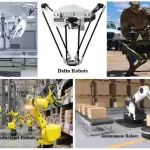What is AI?
AI: A Comprehensive Guide to Understanding Artificial Intelligence
As technology continues to advance, more and more people are talking about AI
or artificial intelligence. But what exactly is AI? In this guide, we’ll
provide a comprehensive overview of AI and its various applications.
Defining AI
At its core, AI refers to the development of computer systems that can perform
tasks that typically require human intelligence. These tasks can include
anything from recognizing speech and visual patterns to making decisions based
on complex data sets.
Types of AI
There are generally two types of AI: narrow or weak AI, and general or strong
AI. Narrow AI is designed to perform specific tasks, such as language
translation or image recognition. General AI, on the other hand, is capable of
performing any intellectual task that a human can.
Applications of AI
AI has a wide range of applications across numerous industries. In healthcare,
AI can help diagnose diseases and identify potential health risks. In finance,
AI is used to detect fraud and manage investment portfolios. In the
transportation industry, AI can be used to optimize routes and reduce traffic
congestion.
Challenges and Concerns
Despite its many potential benefits, AI also presents a number of challenges
and concerns. One major concern is the potential for AI to replace human jobs,
particularly in industries that rely heavily on manual labor. There are also
concerns about issues such as bias and privacy.
The Future of AI
As technology continues to advance, it’s clear that AI will play an
increasingly important role in our lives. While there are certainly challenges
to be addressed, there is also a great deal of excitement around the potential
for AI to revolutionize industries and improve our quality of life.
In Conclusion
Artificial intelligence is a complex and rapidly-evolving field, but it’s also
one that has the potential to change our world in profound ways. By
understanding the basics of AI, we can better appreciate the many ways in
which this technology is already impacting our lives and shaping our future.

